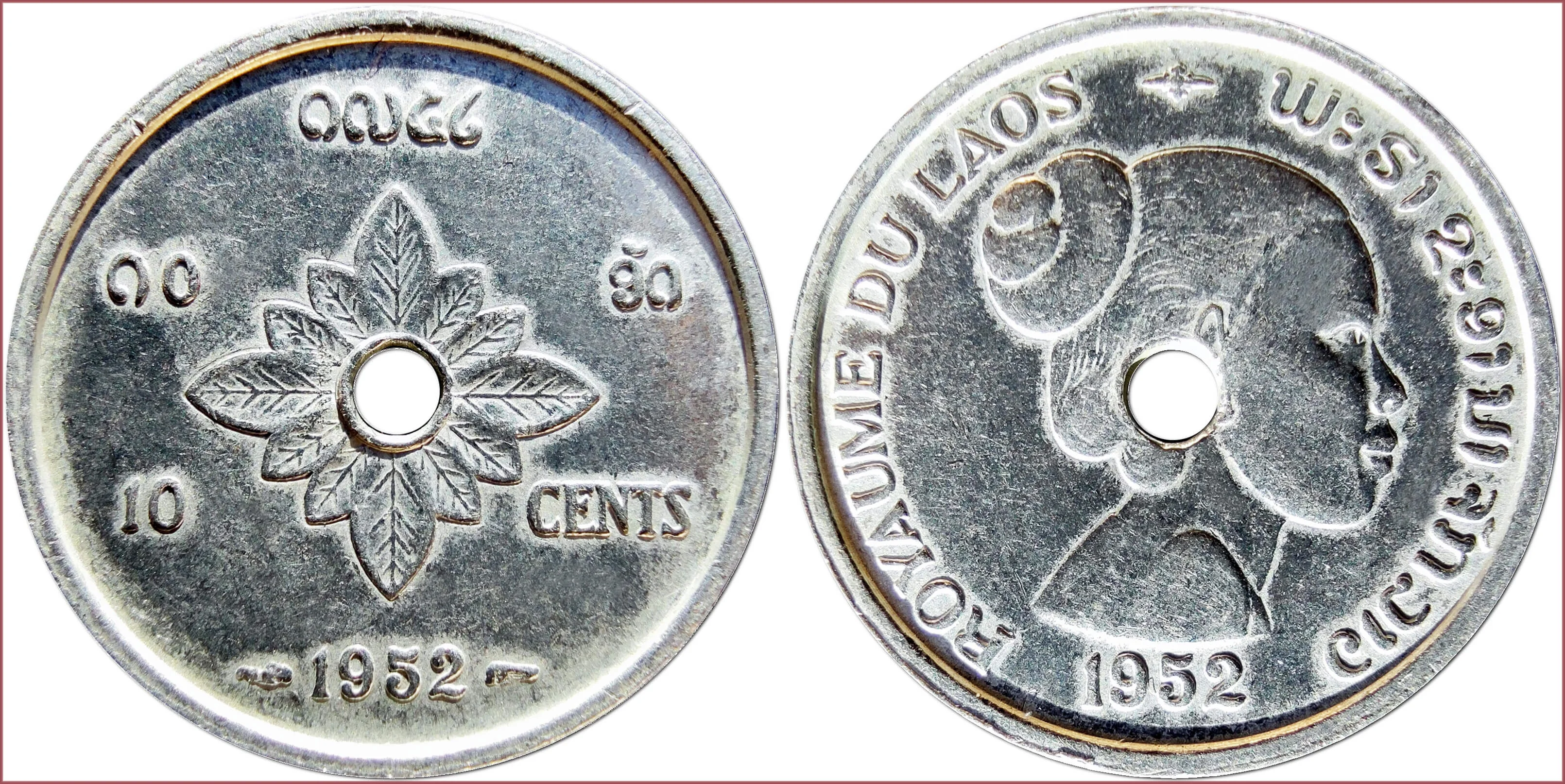ATT: COIN OF LAOS
10 att, 1952: Kingdom of Laos
Ruler: Sisavang Vong (Lao "ພຣະບາທສົມເດັຈພຣະເຈົ້າມະຫາຊີວິຕສີສວ່າງວົງສ໌") — king of the Kingdom of Luang Prabang and later the Kingdom of Laos (1904-1959).
The denomination of the coin is indicated by a double standard: as "10 CENTS" and "໑໐ ອັດ" (or "10 att" in Lao). — Formally, at that time, the French Indochinese piastre (piastre = 100 cents) was used as money on the territory of Laos. The presented coin belongs to the transitional period from the piastre and cent to, respectively, kip and att.
໑໙໕໒: 1952.
Plant stylized ornament.
Hole in the center.
ROYAUME DU LAOS - ພະຣາຊະອານາຈັກລາວ: Kingdom of Laos (in French and Lao).
Laotian ethnic woman with braided bun hairstyle — a symbolic image of a woman of the Lao Loum nationality (in Laos three groups of peoples are conventionally distinguished: Lao Loum /"Lowland Lao"/, Lao Theung /"Lao of the Mountain Slopes"/, and Lao Soung /"Lao of the Mountain Tops"/).
Symbols of Paris Mint: cornucopia (mintmark from 1880) and wing (engraver Lucien Georges Bazor).
Paris mint (Monnaie de Paris, France).
Mintage: 2.000.000.
- Aluminium: 23 mm - 1.3 g
- Reference price: 1.2$
COIN ATT — WHERE & WHEN (coins catalog: by names & emitents)
- LAOS: KINGDOM OF LAOS + LAO PEOPLE'S DEMOCRATIC REPUBLIC (1952-...): att = 1/100 kip
- KINGDOM OF SIAM (1862-1905): att = 2 solot = 1/2 pai = 1/8 fueang (not fuang) = 1/16 salung = 1/64 baht
- KINGDOM OF CAMBODIA (19th century): att = 1/2 pe = 1/8 fuang = 1/64 tical
About the name of the coin att (Thai "อัฐ", Lao "ອັດ"): the coin got its name from Sanskrit "अष्त" (aṣṭá, aṭṭha), which translates as "eight". — At the time the first Siamese att was put into circulation, it was 1/8 fueang.











